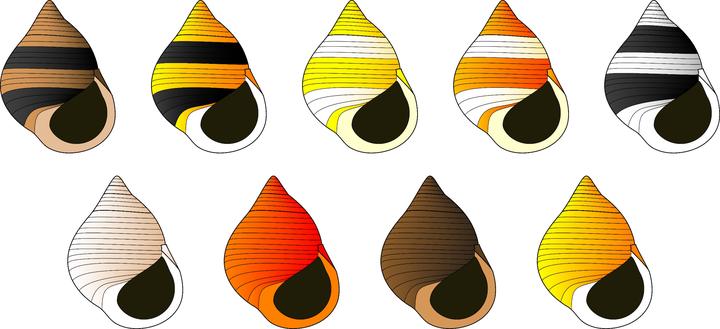Negative assortative mating and maintenance of shell colour polymorphism in Littorina (Neritrema) species
 Image credit: Daniel Estévez-Barcia
Image credit: Daniel Estévez-BarciaAbstract
Colour polymorphism is a widespread phenomenon in natural populations of several species. In particular, it is especially common on marine gastropod species from the genus Littorina. Recently, it has been argued that intrapopulation shell colour polymorphism in Littorina fabalis could be caused by negative frequency-dependent sexual selection via a mechanism of mate choice (indirectly estimated via negative assortative mating). Here we try to determine the existence of negative assortative mating in three species of the subgenus Neritrema (L. fabalis, L. obtusata, L. saxatilis) that share a similar shell colour polymorphism, in order to ascertain if this mechanism could represent an ancestral character in this subgenus that could be contributing to the maintenance of the colour polymorphism in each species. Here, we collected or reanalysed from previous studies a sample of mating pairs of the three species from seven locations from NW Spain and NE Russia and estimated assortative mating using the IPSI index. Our results show that all species and populations show a systematic tendency towards negative assortative mating when shell colour is grouped in the broad categories: ‘light’ and ‘dark’. Although, a more detailed analysis of each colour individually suggests that shell colour may not be the main target of assortative mating, but perhaps physically linked to another trait or through pleiotropic effects. This hypothesis opens interesting new lines of research in Littorina snails.